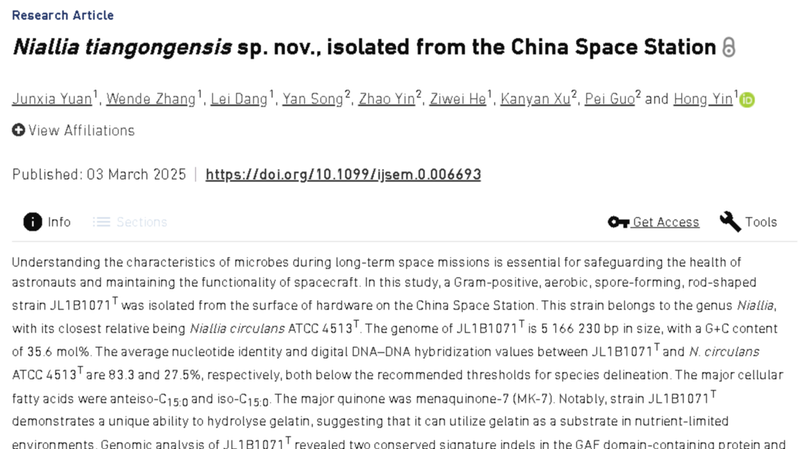In a groundbreaking study published in the International Journal of Systematic and Evolutionary Microbiology, scientists from the Chinese mainland have announced the identification of Niallia tiangongensis, a previously unknown microbial species discovered aboard the China Space Station.
The discovery emerged from a series of experiments designed to examine how microorganisms adapt to the unique environment of microgravity (near weightlessness). Swab samples collected from station surfaces underwent genetic sequencing, revealing a distinct bacterial genome unlike any found on Earth.
Named after the station's orbiting laboratory (Tiangong) and its genus (Niallia), N. tiangongensis showcases remarkable resilience: it thrived under radiation levels and temperature fluctuations typical of low Earth orbit. This resilience hints at potential applications for biotechnology in space, such as developing life-support systems that recycle waste or produce nutrients for long-duration missions.
Beyond practical uses, the discovery fuels broader questions about astrobiology: could similar microbes evolve naturally on other planetary bodies? By studying N. tiangongensis, researchers hope to refine biosensors and contamination-control protocols, critical tools for safe exploration of the Moon, Mars, and beyond.
For young innovators and global citizens alike, this finding underscores the power of interdisciplinary research and international collaboration in pushing the frontiers of science. As space agencies plan missions deeper into the cosmos, microbes like Niallia tiangongensis could play a hidden yet pivotal role in sustaining human presence off Earth.
Reference(s):
Chinese scientists discover a novel species in China Space Station
cgtn.com




